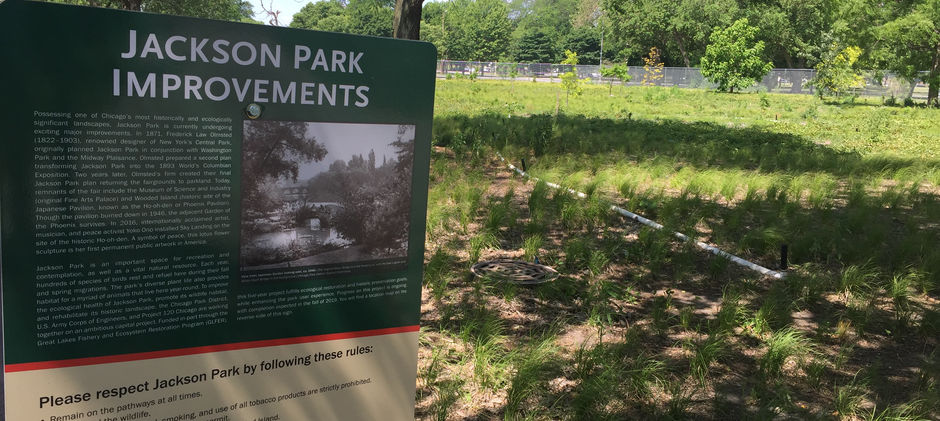Honor Award Winner
Project Name: South Lakefront Framework Plan
Location: Chicago, Illinois
Design Team: SmithGroup
Designed by Frederick Law Olmsted and host to the 1893 World’s Columbian Exposition, Jackson Park is a landmark cultural landscape with historical and cultural significance not only for the city of Chicago, but for world. It has taken several different forms in its 150-year evolution but has retained an indelible role in the culture and community of Chicago’s south side. Today the South Lakefront Parks (Jackson Park and the adjacent and South Shore Cultural Center) provide recreation and restorative landscapes that are a critical part of the social fabric of the communities they serve and are home to cultural destinations that attract over a million visitors each year.
The 2018 Framework Plan envisions a future for all 628 acres of Jackson Park and South Shore Cultural Center fully informed by the communities and people who cherish and use these parks. It is a future that renews the South Lakefront’s 10.5 miles of lake and lagoon shoreline, leveraging unique recreational and ecological opportunities along the water. It embraces the commitment to the historic and cultural legacy of the South Lakefront.
The primary directive and the driving philosophy for this plan was that the community of users, of neighbors and stakeholders, are the experts for these parks. South Lakefront is home to an active, interested community that use and love the parks, but many of whom feel disconnected from the parks’ racially-charged history and/or from the active management and decision-making that guides them. Together with the Park District the landscape designed a community-focused planning process that continually engaged the public through an extensive 10-month schedule. Each phase of the process gathered and synthesized extensive community input to develop and refine the plan.
This project took place on the largest, most high-profile stage in Chicago. It was a regular feature on the evening news, the subject of multiple newspaper articles each week, and water-cooler talk throughout the city. The changes in Jackson Park are highly charged and political, and this planning project was an important and successful first step toward bringing the community, city leaders, and cultural planners together. In a time when our culture is increasingly marked by social detachment and mass consumption of media, this project triggered real interaction and forced public and private conversations around serious and significant questions: What and who are our parks for? What is the role of public space in our cities and communities? What kind of development is in our collective best interests? The conversation is ongoing, and the issues are not fully resolved, but the process of creating this plan brought the community to the table in helping to shape the parks’ evolution and provided strategies that marry the public and private goals for the park in hope of a mutually beneficial and equitable future.
The scale and complexity of the public process was unique among public park projects in Chicago. Few parks carry the historical and cultural consequence of Jackson Park. Beyond the park itself, several big names were in the mix, cultural heavyweights: a president, the father of American landscape architecture, and one of the greatest living athletes. This brought attention and intense scrutiny, and unprecedented media coverage. For most big park projects, a “large” public meeting will see 250, maybe 300 people. The first public meeting for South Lakefront attracted drew over 800 people. Overall the public process involved 2,300 unique participants. Many of these left feedbacks of some form or another: in person comments, thoughts written on notecards, and email, or a comment on the website. To sort, track, and incorporate these comments required inventing techniques—designing spreadsheets, keyword indexing—and lots and lots of reading. Beyond the verbal data, the Landscape Architect was able to incorporate technological capabilities—namely GIS and data analysis and visualization software—that were unavailable during the 1990 Framework Plan process. The analysis of the usage data offered richer and more detailed insight to who is using the parks and how, and brought awareness to trends that could have otherwise remained invisible.










